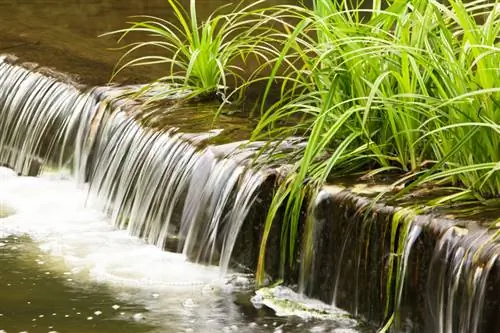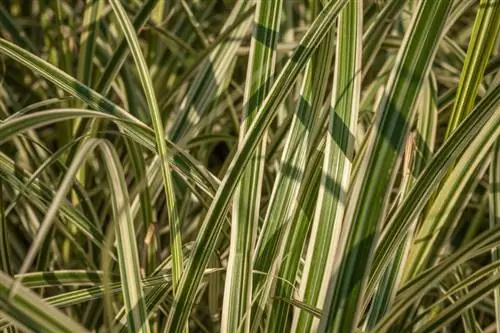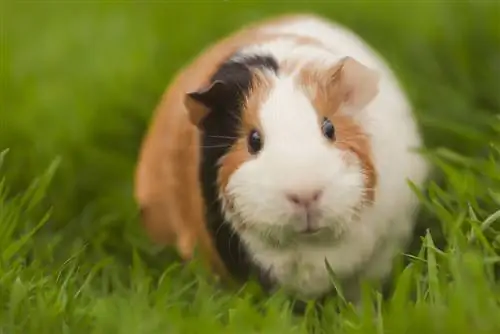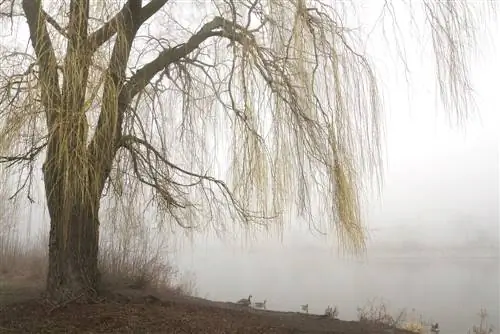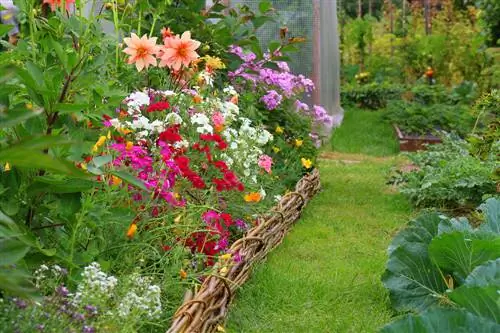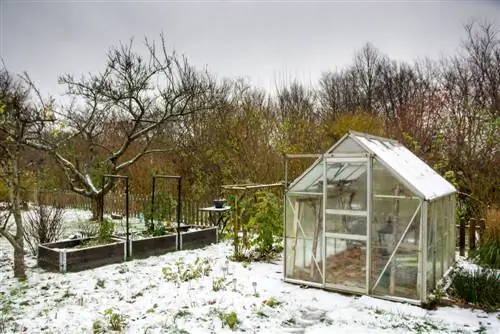- Author admin [email protected].
- Public 2023-12-25 17:45.
- Last modified 2025-01-23 11:22.
The diverse sedge impresses with its elegant growth, robust longevity and remarkable adaptability. The cosmopolitan grass will never let you down in any situation, as there are enchanting grasses available for almost all lighting and soil conditions. You can find out how cultivation works here.
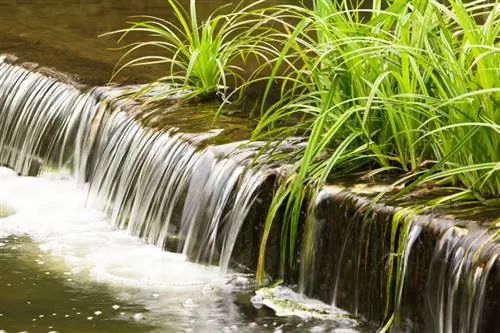
How do I care for sedges in the garden?
Sedges are tough, long-lasting ornamental grasses that thrive in a variety of light and soil conditions. What is important is regular watering, initial fertilization in spring and possibly pruning. In winter, potted plants should be protected and continued to be watered.
Planting sedges correctly
So that the graceful ornamental grass stays with you for many years, set the course with the right planting. The perfect time corridor for this measure extends over the mild autumn months. At the chosen location, loosen the soil thoroughly in order to dig several pits at a generous planting distance. The grass comes into its own in small groups. During this preparatory work, the still potted root ball is soaked in water until no more air bubbles appear. Maintain the planting depth of the growing container when placing the potted sedge in the compost-enriched soil. We recommend chopped miscanthus or leaves as mulch. Bark mulch has proven to be unsuitable in practice.
Care tips
The clear care program proves the robust frugality of sedges. The ornamental grass is happy about these few donations:
- Water the grass regularly as soon as the soil surface has dried
- Water a plant in a pot every now and then during clear frost, even during the winter
- Starting fertilization in March with compost covers the nutrient requirements
- Before winter, loosely tie clumps together to protect the heart of the plant
Not all sedge species require pruning. Cut wintergreen grass back to the ground in early spring. Alternatively, simply pluck out the retracted stalks with your hands. Don't forget your gloves.read more
Which location is suitable?
The wide range of sedge species provides the ideal grass for all light and temperature conditions. The majority of the magnificent grasses prefer a sunny to partially shaded location with nutrient-rich, fresh, moist soil. If it is a sunny, dry spot in the gravel bed or on the roof garden, robust species such as the tufted sedge or brocade sedge are available. To surround a pond with ornamental grass, you are well advised to use the morning star sedge.
The correct planting distance
The habitus defines the ideal distance from the bed neighbor. Place small, clumpy grasses in the soil at a distance of 25-30 cm. Medium-sized varieties with a tight, upright silhouette are planted at a distance of 35-40 cm. The majestic giant sedge, on the other hand, requires a planting distance of 70-80 cm.
What soil does the plant need?
If you match the soil conditions to the selected sedge species, the cultivation of the frugal plant will proceed in a regulated manner. If the quality of the soil at the location does not come close to ideal conditions, soil additives can help. Compacted soil becomes more permeable and looser with the help of sand, grit or perlite. Soil that is too sandy gets a more stable consistency with compost or bark humus. For grasses in pots, we recommend high-quality pot plant soil (€18.00 on Amazon) with a low peat content, optimized with lava granules or expanded clay. If the pH value fluctuates between 5.5 and 6.8, the sedge world is fine.
What is the best time to plant?
Ornamental grasses, such as the sedge, assume the status of a perennial. As a result, there is planting time twice a year. Although a plant in a container can essentially be placed in the ground throughout the entire growing season, the general conditions favor this time frame:
- Ornamental grass ideally planted in autumn during the months of September to October
- Alternatively, use in spring as soon as the ground has thawed and the weather is frost-free
Cut the sedge correctly
Wintergreen grasses are not cut in autumn for aesthetic and care reasons. In this way you are depriving yourself of a magical look when the graceful grass heads are covered with glittering frost and snow. In addition, the withered blades of grass act as natural winter protection. How to cut ornamental grass correctly:
- Cut the overwintered grass at the end of January/beginning of February
- Tie the nest into several small bundles and cut off close to the ground
- To protect yourself from the sharp edges of the grass, be sure to wear gloves
If fresh shoots have already appeared, cutting is no longer an option. Instead, reach into the grass with your gloved hands to pull up the retracted blades.read more
Watering the sedge
Caring for a sedge is fine if the plant is not subject to drought stress at any time. Therefore, water the ornamental grass in summer and winter if the natural rainfall or snow is not sufficient. Intermittent drying phases are important to prevent waterlogging from forming. Experience has shown that you should water more frequently in the pot because the root ball dries out more quickly due to its exposed location.
Fertilize the sedge properly
You can keep the ball flat if you supply nutrients properly. The undemanding plant is content with starting fertilization in March/April in the form of compost. It has a beneficial effect on growth if the autumn leaves remain in the bed as mulch under trees. In the limited substrate volume of a pot, however, the supplies are used up within 6 to 8 weeks after planting. Here you fertilize monthly from April to August with a liquid preparation for green plants.
Wintering
No explicit winter protection is required in the bed. For reasons of caution, larger clumps can be loosely tied together with sisal to protect the heart of the plant from constant winter wetness. Before the first frost, containers are covered with bubble wrap and placed on wood. Continue to water wintergreen grasses as evaporation continues during the cold season.
Propagate sedge
The horticultural serenity in the cultivation of ornamental grass continues seamlessly in terms of propagation. To grow more specimens of this picturesque plant, dig up the root ball in fall or spring. On a firm surface, divide the sedge into two or more segments. As long as a section has at least two stalk shoots, it will continue to thrive as an independent plant in the new location.
Beautiful varieties
- The Beatles: Beautiful mushroom-headed sedge with swirly grass heads and a broad, clumpy habit; Growth height 20-30 cm
- Bowles Golden: Tightly upright golden sedge in light yellow for sunny and partially shaded locations; Growth height 40-70 cm
- Variegata: Fantastically beautiful white-edged Japanese sedge for low-light locations; Growth height 30-40 cm
- Bronze shape: The bronze-colored grass heads decorate damp areas along the waters; Growth height 30-40 cm
- Forest sedge: Ornamental grass with ground cover qualities in the shade of mighty trees; Growth height 15-20 cm
- Evergold: The Japanese gold sedge does not leave sunny beds with dry soil ungreened; Growth height 20-30 cm

